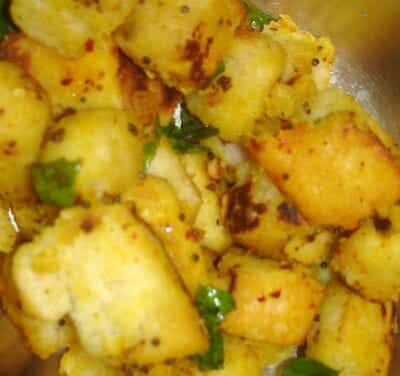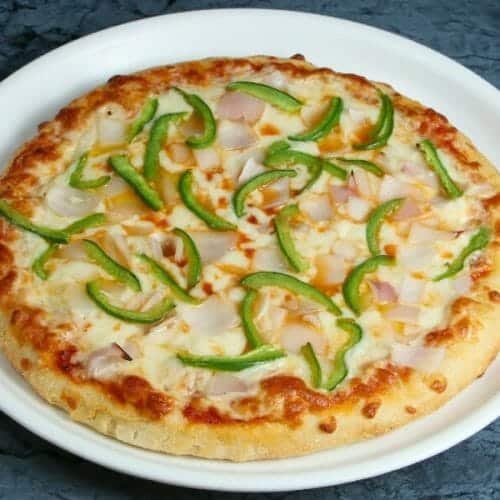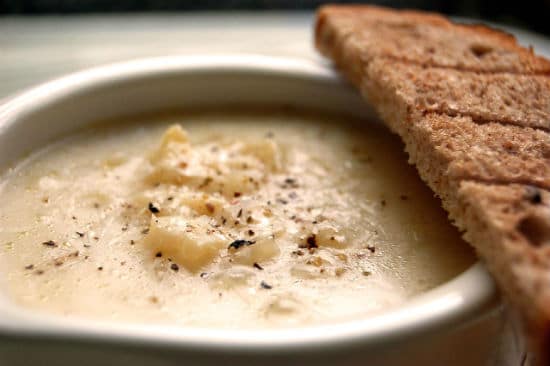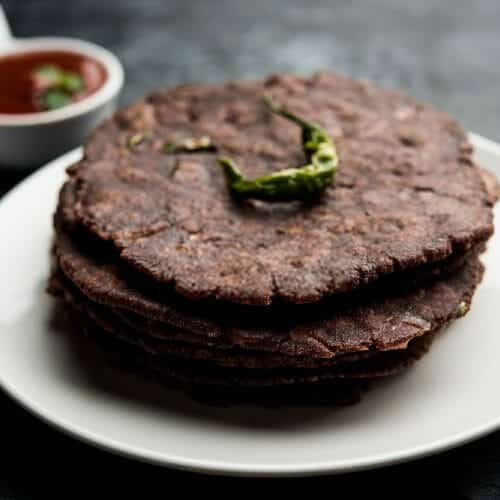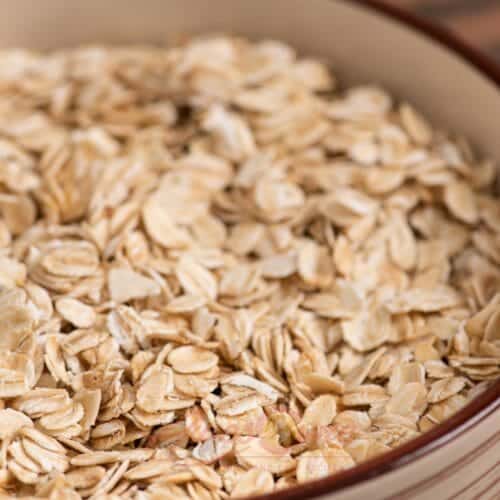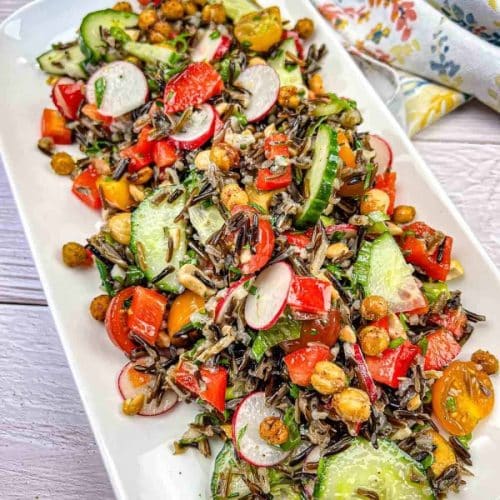Diabetes is a medical condition that requires constant management of diet and lifestyle. It requires careful meal planning and limiting certain foods, particularly those high in carbohydrates and sugars.
For most diabetics, the real struggle lies in finding healthy recipes for their condition and satisfying their taste buds. It’s easy to fall into the trap of choosing diet options that seem healthy but can potentially spike blood sugar levels. Here, we present a handpicked selection of 20 easy Indian diabetic breakfast, lunch and dinner ideas – effortlessly blending health with taste.
They encompass meals from various Indian regions, promising familiarity and comfort. All these recipes are conscientiously selected for their low glycemic index, promising controlled and steady release of glucose in the blood, keeping blood sugar levels in check in small quantities.
This blog will guide you through making these delicious and healthy meals, considering individual dietary needs and sugar content. It will make it the perfect solution for those seeking flavoursome yet nutritious options to manage diabetes properly for diabetic patients.
Importance of diabetic-friendly meals
Managing diabetes isn’t just about avoiding sugar. It’s more about the overall diet — the right balance and proportion of carbs, proteins, and fats in every meal. Diabetic-friendly meals have a low glycemic index, ensuring slow and steady glucose release into the blood and preventing sudden spikes in sugar levels. Additionally, they are rich in fibre, which aids digestion and offers a feeling of satisfaction, reducing the risk of overeating and aiding in weight loss.
Hence, diabetic-friendly meals encompass a holistic approach to diabetes management, ensuring controlled sugar levels and overall well-being. The best way to incorporate diabetic-friendly meals into your diet is to eat short and frequent meals at regular intervals (6-8 meals per day), which helps maintain stable blood sugar levels.
Delicacies like Garlicky Hummus and Colocassia Leaf Raita are perfect choices to consume between main meals, especially for those looking for delicious diabetic-friendly versions of their favourite foods.
Breakfast Recipes for Diabetics
Breakfast is the most crucial meal of the day, especially for people with diabetes. A nutrient-rich breakfast, including low-carb options, keeps energy levels steady throughout the day and prevents sudden spikes in blood sugar.
Diabetic-friendly breakfast options must be high in fibre and protein and low in carbs to provide fullness and maintain steady glucose release. Here, we present five easy-to-make Indian breakfast recipes that are incredibly appetising and also help manage diabetes efficiently, with a focus on low-carb options.
One option is to prepare a refreshing salad using a mix of sprouts (such as whole moong, bean sprouts, lentil sprouts, etc.) along with diced vegetables like cucumbers, tomatoes, and bell peppers and a pinch of salt and lime juice. This salad provides essential vitamin C from moong daal for overall health.
Oats Upma
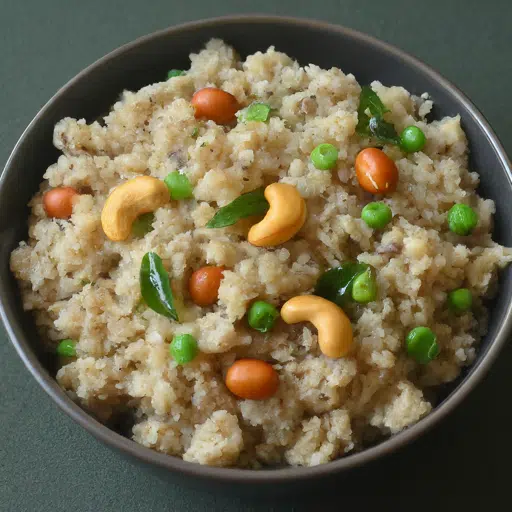
Oats Upma
Breakfast is the most crucial meal of the day, especially for people with diabetes. A nutrient-rich breakfast, including low-carb options, keeps your energy levels steady throughout the day and prevents sudden spikes in blood sugar levels. Diabetic-friendly breakfast options must be high in fibre and protein and low in carbs to provide fullness and maintain steady glucose release. Here, we present five easy-to-make Indian breakfast recipes that are incredibly appetising and also help manage diabetes efficiently, with a focus on low-carb options.
Here’s how to prepare this simple dish:
- Heat a pan; add oil and cumin seeds.
- Add chopped onions, green chilli, ginger, and sauté till onions turn transparent.
- Toss in a mix of colourful vegetables like carrots, green peas, and bell peppers.
- Stir in oats and salt, and cook for 2 mins.
- Serve this warm and fulfilling upma garnished with coriander leaves.
Know how to make Oats Upma at home
Moong Dal Chilla
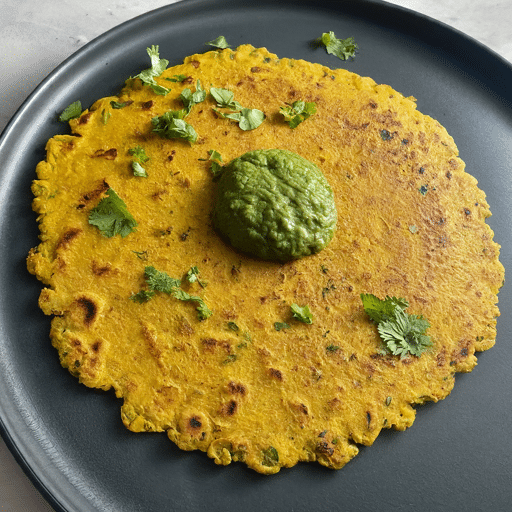
Moong Dal Chilla
Moong Dal Chilla is a protein-packed Indian pancake that is quick to prepare and satisfying. Moong dal is a powerhouse of protein and fibre, essential for controlling blood sugar levels. Ginger and turmeric added to the batter have anti-inflammatory properties to help manage diabetes better.
Here’s how to prepare it:
- Soak moong dal overnight and grind it into a smooth batter.
- Add grated ginger, turmeric powder, and salt to the batter.
- Heat a tawa or non-stick pan, pour a ladleful of batter, and spread evenly into a circular shape.
- Drizzle oil on the sides and cook until golden brown.
- Flip and cook the other side.
- Serve hot with mint chutney for a wholesome breakfast.
Read how to make Besan Chilla here.
Ragi Idli
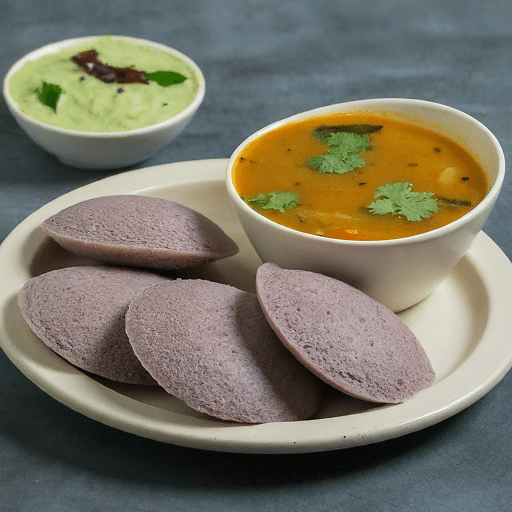
Ragi Idli
Ragi Idli incorporates the goodness of ragi, finger millet, and urad dal. Ragi is rich in dietary fibre and has a low glycemic index, ensuring a slow release of glucose into the blood, making it ideal for people with diabetes.
Here’s how you make it:
- Mix ragi flour and urad dal batter and ferment it overnight.
- Pour the batter into idli moulds and steam them.
- Allow it to cool slightly, and de-mould the idlis.
- Serve them hot with coconut chutney or sambar.
Incorporating ragi in breakfast can aid in managing diabetes while offering a hearty start to your day.
Read: How do I make Idli at home?
Quinoa Dosa
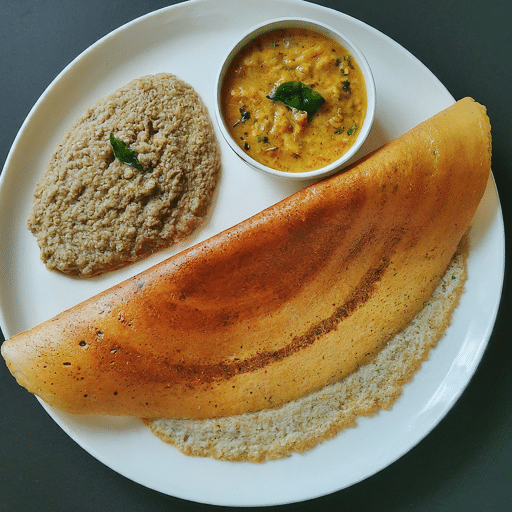
Quinoa Dosa
Quinoa Dosa is a healthier spin on the traditional dosa. It is made using quinoa, a grain known for its high protein content and low glycemic index. Combined with urad dal and whole wheat flour, this dosa is not only diabetic-friendly but also very delicious.
Here’s how to prepare:
- Soak quinoa and urad dal overnight and grind into a smooth batter.
- Add whole wheat flour and water until dosa consistency is achieved.
- Spoon onto a hot tawa and spread thinly and evenly.
- Drizzle oil on the sides and cook until golden brown.
- Flip and cook the other side.
- Serve with tomato chutney or sambar.
Opting for quinoa dosa for breakfast can be a delightful change while managing your diabetes effectively.
Methi Paratha
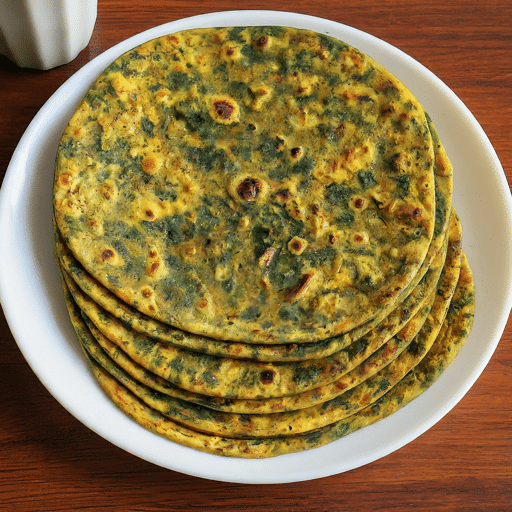
Methi Paratha
Methi Paratha combines the benefits of whole wheat with fenugreek leaves, which are known for their high fibre content and ability to control blood sugar levels. This complex carbohydrate steadily provides energy.
To prepare this tasty meal:
- Knead whole wheat flour with chopped fenugreek leaves, turmeric, red chilli powder, cumin seeds, and salt.
- Roll into rotis and cook on a tawa with minimal oil until golden brown.
- Green leafy vegetables like fenugreek are a boon to people with diabetes and carry loads of vitamins and antioxidants.
Start your day with these delicious methi parathas for a nutrition-packed, diabetic-friendly breakfast.
Read the complete recipe of Methi Paratha
Lunch Recipes for Diabetics
A well-balanced lunch is crucial in a diabetic meal plan. It should contain a good mix of protein, fibre, and limited carbs to ensure a slow and steady release of glucose into the bloodstream. Including whole grains and plenty of vegetables in lunch can help meet these nutritional needs. Here, we present five healthy Indian lunch recipes that are not only flavourful but could also aid in managing diabetes.
Brown Rice Vegetable Pulao
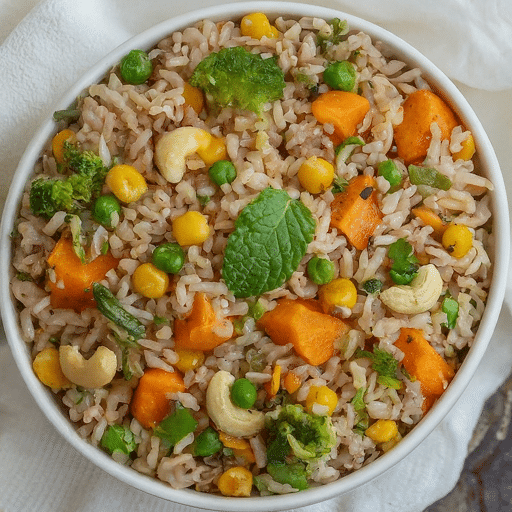
Brown Rice Vegetable Pulao
Brown Rice Vegetable Pulao is a tasty and healthful lunch option for people with diabetes. It features brown rice, known for its high fibre content and a colourful range of vegetables. Vegetables add to the fibre content and contain essential vitamins and minerals.
Here’s a quick recipe:
- Sauté chopped onions, ginger and garlic in oil.
- Add various colourful vegetables like carrots, beans, peas, and cauliflower.
- Stir in soaked and drained brown rice.
- Pour in water, season with salt, cover and cook until done.
- Serve hot, garnished with fresh coriander.
Enjoy this nutrient-dense pulao for lunch, and do your bit in managing your sugar levels.
Mixed Millets Roti
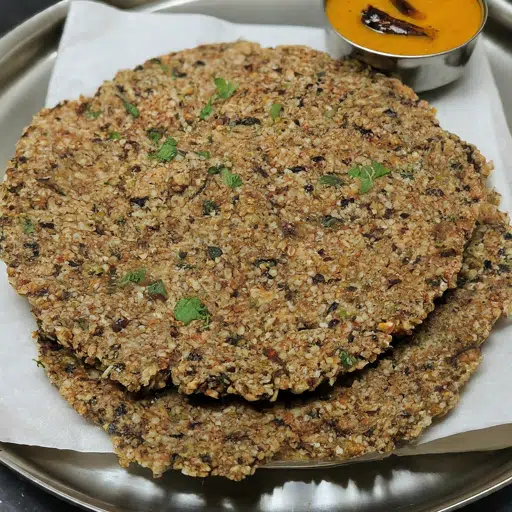
Mixed Millets Roti
Mixed Millets Roti is a nourishing option for people with diabetes. It is packed with the goodness of several millets. Millets have a low glycemic index and are abundant in dietary fibre, making them beneficial for maintaining blood sugar levels.
Here’s a simple method to prepare this roti:
- Knead a dough using mixed millet flour and water.
- Roll out into thin rotis.
- Cook on a tawa using minimal oil until golden on both sides.
Palak Paneer (low-fat version)
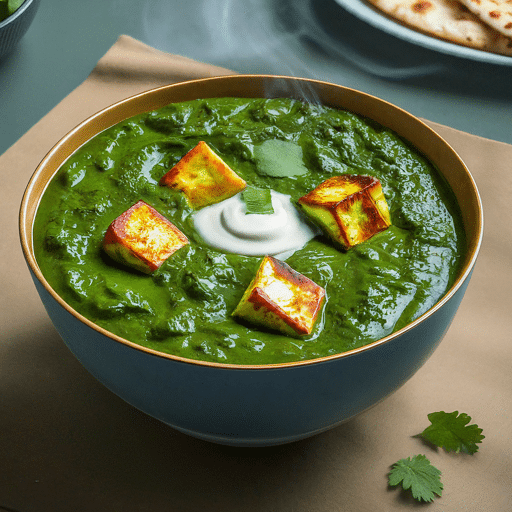
Palak paneer recipe
Palak Paneer is a splendid Indian recipe known for its unique blend of taste and nutrition. Using low-fat paneer and less oil can be perfect for diabetic-friendly lunches.
Preparing Palak Paneer:
- Sauté chopped onions, ginger, garlic, and green chillies in minimal oil until brown.
- Add finely chopped spinach and cook until wilted.
- Stir in crumbled low-fat paneer and season with salt.
- Cook until well combined.
Also Read: Palak paneer recipe
Cauliflower Sabzi
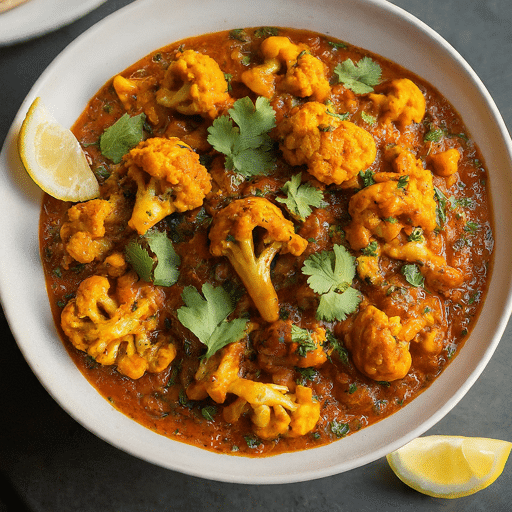
Cauliflower sabzi
Cauliflower Sabzi is a wonderful, easy-to-make dish, perfect for a diabetic-friendly lunch. It is rich in antioxidants and has a high fibre content, aiding blood sugar control.
How to prepare this sabzi:
- Stir-fry cauliflower florets in minimal oil until golden.
- Add turmeric, chilli powder, cumin seeds, and salt.
- Cover and cook until tender.
Know how to make Cauliflower Fry at home
Chickpea Salad
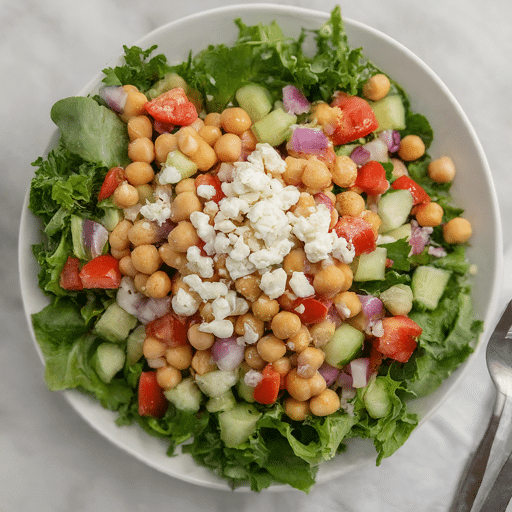
Chickpea Salad
Chickpea Salad is a light yet filling dish ideal for people with diabetes. Chickpeas have a low glycemic index and are a great source of fibre and protein. The iron in chickpeas aids in haemoglobin production. This dish can be a great addition to your diabetic-friendly meal plan while offering variety.
To make this salad:
- Combine boiled chickpeas, tomatoes, onions, cucumber, and coriander.
- Dress it with a mix of lemon juice, salt, and pepper.
Dinner Recipes for Diabetics
A diabetic-friendly dinner menu is similar to a lunch menu, focusing on proteins, fibre, and restricted carbohydrates. Light and non-greasy dinners prevent overnight spikes in blood sugar levels and promote better sleep. Here, we present five Indian dinner recipes that are pleasing to the palate and perfect for managing diabetes.
Bajra Khichdi
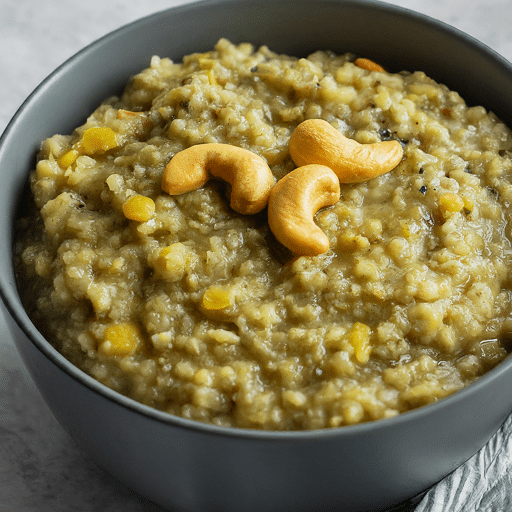
Bajra khichdi
Bajra Khichdi is a heartwarming meal made from pearl millet. It is high in protein and fibre and has a low glycemic index, making it ideal for people with diabetes. Bajra is also enriched with antioxidants that help in inflammatory conditions.
To cook this khichdi:
- Pressure-cook bajra with enough water until soft.
- In a pan, sauté onions, garlic, and green chillies in minimal oil.
- Add cooked bajra season with salt and turmeric powder.
- Simmer until well combined.
Whole Wheat Spinach Wrap
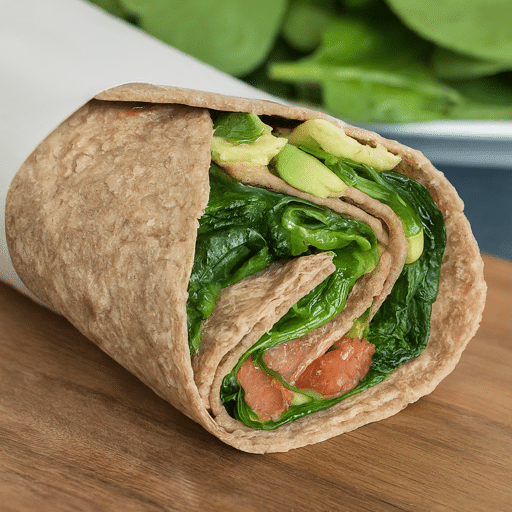
Whole wheat spinach wrap
Whole Wheat Spinach Wrap is a wholesome meal in itself. The nutrition-loaded spinach and whole wheat base make it perfect for people with diabetes.
Method to make this wrap:
- Prepare a dough using whole wheat flour, water, and salt.
- For the filling, stir-fry spinach, onions, and crumbled paneer with minimal oil.
- Roll out rotis, add the filling, and roll them into wraps.
Jowar and Vegetable Soup
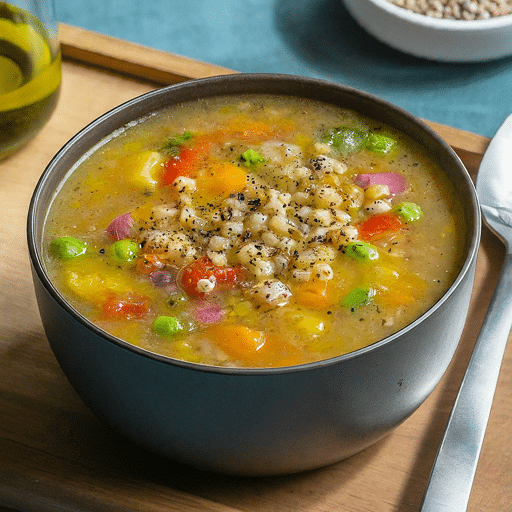
Jowar and Vegetable Soup
Jowar and Vegetable Soup is a nourishing and comforting meal suitable for people with diabetes. Jowar is an excellent source of fibre and aids in controlling blood sugar levels. The use of varied veggies contributes to the needed vitamins and minerals.
Here’s how to prepare this soup:
- In a pan, sauté onions and minced garlic in minimal oil.
- Add diced vegetables like carrots, beans, peas, tomatoes and jowar.
- Pour in water and season with salt and pepper.
- Simmer until done.
Grilled Tofu with Vegetables
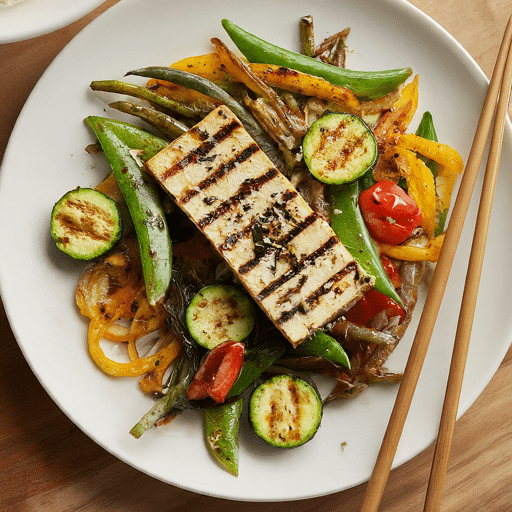
Grilled Tofu with Vegetables
Grilled Tofu with Vegetables is a delightful and light dinner option for people with diabetes. Tofu is high in protein and calcium, while vegetables add to the fibre content and vitamins.
How to prepare it:
- Marinate tofu chunks in soy sauce, chilli sauce, and vinegar.
- Saute veggies like bell peppers, broccoli, and zucchini in minimal oil.
- Grill the marinated tofu until golden.
Read how to make Grilled Vegetable at home
Barley and Lentil Stew
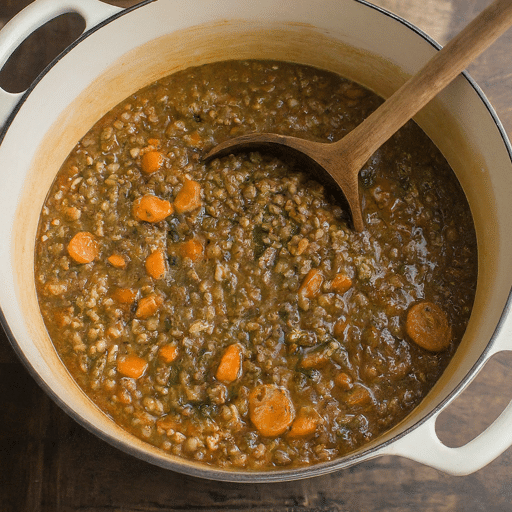
Barley and Lentil Stew
Barley and Lentil Stew is a rich and hearty meal for people with diabetes. Barley is a whole grain packed with fibre and aids in maintaining stable blood sugar levels.
Steps to prepare this stew:
- In a pot, in minimal oil, sauté onions, garlic, and carrots.
- Add soaked barley and lentils.
- Pour vegetable stock or water and let it simmer until done.
Snack Ideas for Diabetics
Healthy snacking can be a boon for managing diabetes. It helps maintain blood glucose levels and prevent overeating during mealtimes. However, it’s essential to choose the right snacks that are low in carbohydrates and sugar and high in fibre and protein.
Here, we present five healthy Indian snack options that are tasty and suitable for effectively managing diabetes and high blood pressure, including black pepper in dishes like moong sprouts, spring onion tikki, sprouted matki and coriander mini uttapam. For a heartier snack, try incorporating vegetable oats into your diet. Opt for rolled or steel-cut oats, as they are less processed than the instant type. According to FoodData Central, a bowl of 100 grams of vegetable oats will have:
Sprouted Moong Salad
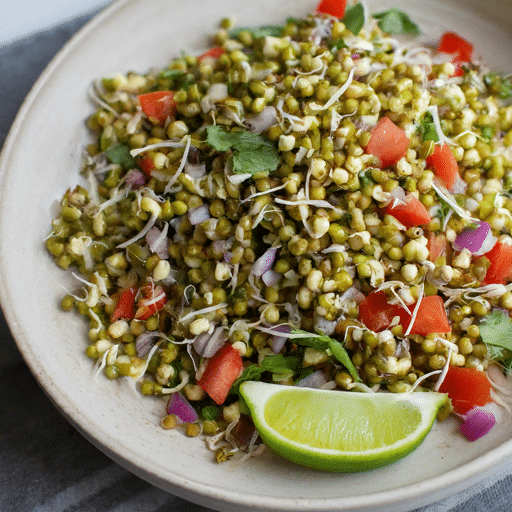
Sprouted Moong sald
Sprouted Moong Salad is a crunchy and refreshing snack suitable for people with diabetes. Sprouted moong is rich in protein and fibre and has a low glycemic index, making it an excellent snack choice.
Here’s how you can make it:
- Add sprouted moong, finely chopped onions, tomatoes, cucumber, and coriander leaves in a bowl.
- Toss it with a dressing of lemon juice, salt, and pepper.
Also Read: Sprouted Moong Dal Recipe
Multigrain Crackers with Hummus
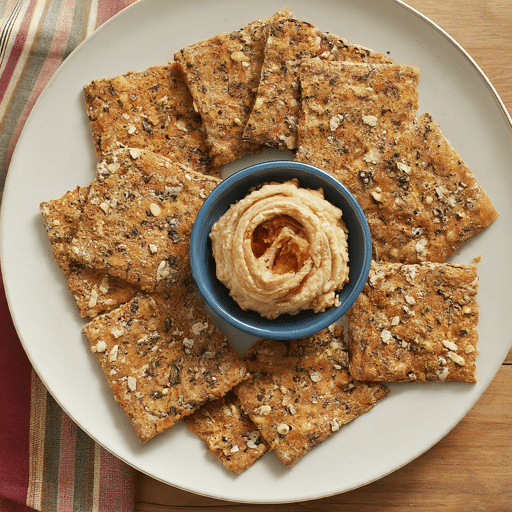
Multigrain Crackers with Humus
Multigrain Crackers with Hummus is a delicious and wholesome snack for people with diabetes. Multigrain, a combination of different grains, is high in dietary fibre and nutrients, and hummus adds protein to the snack.
How to prepare this snack:
- Blend cooked chickpeas with tahini, garlic, lemon juice, and olive oil to make hummus.
- Top multigrain crackers with a dollop of hummus and serve.
Roasted Chickpeas
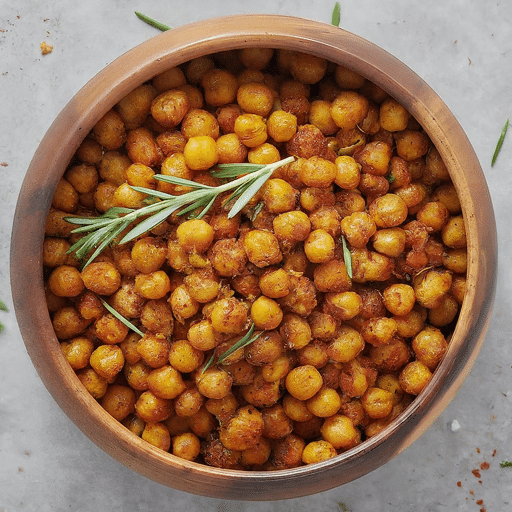
Roasted Chickpeas
Roasted Chickpeas is a delightful and crunchy snack perfect for people with diabetes. Chickpeas are a good source of protein and fibre and have a low glycemic index.
Here’s how to prepare this tasty snack:
- Toss cooked chickpeas in olive oil and roast them until crispy.
- Season with salt and pepper.
Baked Sweet Potato Fries
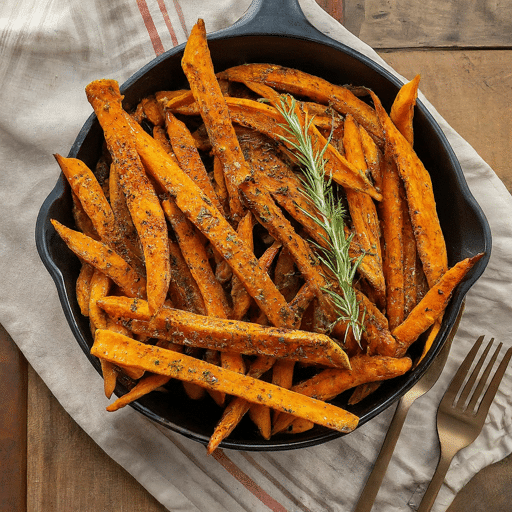
Baked Sweet Potato Fries
Baked Sweet Potato Fries are a delicious and healthy alternative to regular fries for people with diabetes. Sweet potatoes are a fibre-rich, low-GI food item that slows down the release of glucose.
Here’s an easy way to prepare these fries:
- Cut sweet potatoes into wedges and toss them in olive oil, salt, and pepper.
- Bake them in a preheated oven until golden and crispy.
Read the complete recipe for Sweet Potato Fries here.
Yogurt with Fresh Berries
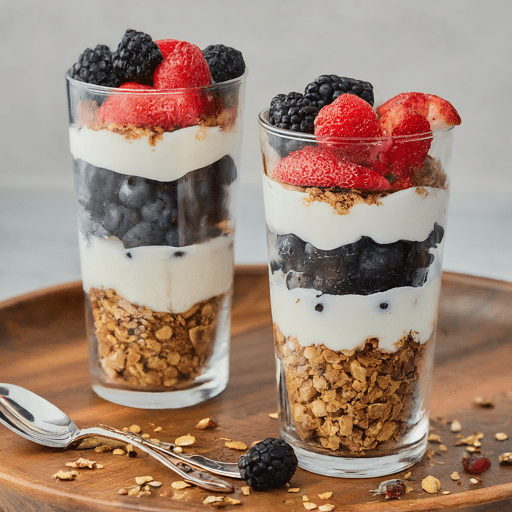
Yogurt with Fresh Berries
Yoghurt with Fresh Berries is a refreshing and tangy snack for people with diabetes. Yoghurt is a good source of proteins and calcium, while berries are full of antioxidants and fibre.
How to prepare this quick snack:
- Mix low-fat yoghurt, a dollop of honey and a handful of fresh berries.
- Berries are high in fibre, which helps in regulating blood sugar.
- Yoghurt provides essential proteins and aids in digestion.
- Berries are full of antioxidants that help in managing inflammation.
- It can be enjoyed as an evening snack or a quick bite anytime.
Recommendations for Diabetics
Managing diabetes effectively requires adherence to a balanced diet, regular physical activity, and timely medication. While healthcare professionals should supervise medication, dietary changes can be managed independently.
Here, we present some simple dietary adjustments diabetics can incorporate into their daily lives to manage their condition better.
Remember, minor changes eventually lead to significant results, and these recommendations, including following a personalised diabetic diet chart and incorporating a diabetes diet plan, will surely assist in controlling diabetes while promoting overall health. It is highly recommended for individuals with diabetes to follow a personalised diabetic diet chart to effectively manage their blood glucose levels and alleviate symptoms of diabetes. Additionally, incorporating healthy options into your meals, such as whole grains, lean proteins, and fresh fruits and vegetables, can help improve your overall health and manage the symptoms of diabetes.
Incorporating Whole Grains
Whole grains like oats, barley, quinoa, brown rice, and whole wheat are fibre-rich fillings and have a lower glycemic index than refined grains. As a result, they release glucose slowly into the bloodstream, maintaining steady blood sugar levels.
Why whole grains:
- High in dietary fibre, it is beneficial in regulating blood sugar levels.
- Rich in essential vitamins, minerals and antioxidants.
- Provide lasting satiety, preventing overeating.
- It can be easily included in diets through bread, pasta, rice dishes, and cereals.
Adding More Vegetables and Legumes
Vegetables and legumes, such as lentils, beans, and peas, are rich sources of fibre and nutrients. Their high fibre content slows the digestion and absorption of carbohydrates, thus preventing blood sugar spikes.
Why add more veggies and legumes:
- They are nutrient-dense and low in calories.
- High in fibre, supporting better glucose control.
- Fresh greens contain antioxidant properties that are beneficial for managing inflammatory conditions.
- They can be added to any meal, like soups, salads, curries or snacks.
Choosing Low-Fat Dairy Products
Opt for low-fat dairy products such as milk, yoghurt, and cheese. These provide proteins, calcium, and vitamin D without excess calories and fats.
Advantages of low-fat dairy:
- Provides essential calcium and vitamin D for bone health.
- It’s a good source of quality protein.
- It can help in managing body weight.
- It can be easily included in the diet through recipes or as beverages.
Opting for Lean Proteins
Consider lean proteins such as skinless chicken, turkey, fish, eggs, tofu, and low-fat dairy products. Proteins take longer to digest, preventing sudden spikes in blood sugar levels.
Why choose lean proteins:
- Assist in maintaining steady blood glucose levels.
- Promote a feeling of fullness, preventing overeating.
- Contribute to muscle mass maintenance and building.
- It can be included in versatile meals, from stir-fries and soups to salads or main dishes.
Conclusion
Managing diabetes is made more accessible when a balanced diet is part of the daily routine. By being mindful of glycemic index and incorporating high fibre, lean proteins, whole grains, and low-fat dairy into meals, one can enjoy a variety of tasty, wholesome foods while keeping blood sugar levels in check. It’s all about planning and making wise choices. This blog has provided 20 easy-to-make and delicious Indian breakfast, lunch, dinner, and snack recipes that fit perfectly into a diabetic-friendly meal plan. Remember, maintaining a regular eating pattern can avoid fluctuations in blood sugar levels.
Also, remember that what works for one might not work for another. Therefore, consulting with healthcare professionals regularly to tailor dietary plans according to personal health needs is essential. Managing diabetes doesn’t mean one’s diet must be dull or restrictive.
It’s all about balance, portion control, and making healthy choices. After all, a diabetes-friendly diet can be both nutritious and exciting.
Frequently Asked Questions
Can people with diabetes consume artificial sweeteners?
Although artificial sweeteners do not raise blood sugar levels, their safety and potential effects on appetite and weight are still being researched. Therefore, moderate use is recommended. If possible, it’s best to control sweet cravings with natural alternatives like fruits, berries, or dark chocolate.
What fruits can people with diabetes eat?
People with diabetes should choose fruits with low glycemic index, like apples, pears, oranges, peaches, plums, guava, watermelon, strawberries, blueberries, and kiwifruit. However, portion control is necessary. It’s best to consume fresh fruits instead of juice as they have more fibre. Always check your blood sugar levels after consuming a new fruit.
What is the role of exercise in diabetes management?
Regular exercise can help lower blood sugar levels, improve insulin sensitivity and promote cardiovascular health. It also aids in maintaining a healthy weight, a critical aspect of managing diabetes. Always consult with a healthcare professional before starting any new exercise regimen.
How can portion control help in managing diabetes?
Portion control is essential in managing diabetes as it helps prevent overeating and spikes in blood sugar levels. Consuming smaller meals more frequently makes blood glucose levels more stable, aiding overall blood sugar management.
What should a person with type 2 diabetes eat for breakfast, lunch and dinner?
For breakfast, a Type 2 diabetic can enjoy options like oatmeal with nuts and berries, Greek yoghurt with sliced fruits, or whole grain toast with avocado and poached eggs. Lunch can consist of grilled chicken and vegetable salad, quinoa and roasted vegetable bowl, or a tuna salad wrap with whole grain bread. Dinner choices could include grilled fish with roasted sweet potatoes and green beans, lentil soup with mixed greens salad, or stir-fried tofu with vegetables and brown rice. These recipes focus on balanced meals that are delicious and suitable for diabetes management.
What is the best eating schedule for people with diabetes?
The best eating schedule for people with diabetes typically involves consuming smaller meals every 3-4 hours throughout the day to help maintain stable blood sugar levels. This can include having a balanced breakfast, mid-morning snack, lunch, afternoon snack, dinner, and possibly a light evening snack. Consistency in meal timing is crucial in managing blood glucose effectively. Remember to personalise your eating schedule based on your needs and consult a healthcare provider or dietitian for guidance tailored to your health goals.







